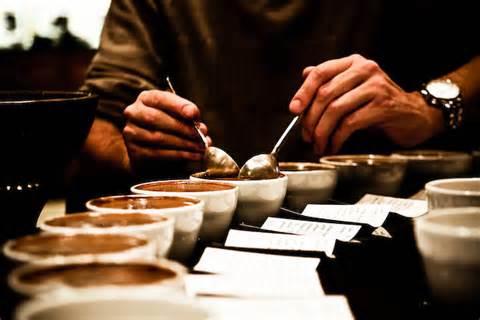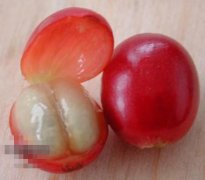Coffee Bean Taste Coffee Cup Test of Colombian "Rosa" coffee beans

Geisha is an Arabica coffee variety originating from Geisha Mountain in southwest Ethiopia. The author translites it as "Geisha"; because the Japanese pronunciation of "Geisha" is similar to Geisha, Geisha is called "Geisha" coffee in Japan; the author thinks that it is easier to communicate with foreign countries with transliteration "Geisha" in Chinese.
According to the information on the website of Panama Emerald Estate, the seeds of "Gaixia" coffee were taken from Geisha Mountain in southwest Ethiopia in 1931, transplanted to Kenya in 1931~32, transferred to Tanzania in 1936, and introduced to Costa Rica in 1953. As for when they were introduced to Garamillo in Panama, Jaramillo Estate is unknown, only known as Panama Emerald Farm (Hacienda La Esmeralda) Peterson family (Price Peterson) in 1996 after buying the Jaramillo Estate, found that the edge of the estate coffee flavor unique, so participate in Panama in 2004 "extraordinary cup"(COE) competition, did not want to be famous, almost every year since the award. After identification, the variety originated from Ethiopia "Gaixia Mountain", so it is called "Gaixia" coffee. Panamanian Gaixia coffee has been auctioned for nearly $290 per kilogram.

The Herrera family of Hope Farm in Colombia introduced Gaixia coffee from Emerald Estate in Panama in 2007. Although it failed at first, after years of trial planting, it won the first place in COTY - Coffees of the Year held by American Fine Coffee Association in Houston in April 2011. For details, see the announcement of the 2011 Global Best Coffee (Green Bean) Competition of American Fine Coffee Association
David Piza C graduated from the University of Los Angeles in Bogota with an industrial engineering major and is a Colombia professional coffee cup tester and barista competition judge. Arriving in China in August this year, Colombia Geisha was one of the many high-quality manor boutique coffees carried. The author roasted the coffee according to the raw bean information provided by Pei Daxing and the expected roasting curve in his mind. To everyone's surprise, there was almost no difference between the Gaesha baked by the author and the samples brought by Pei Daxing (Pei Daxing did not take out the samples they repeatedly baked in Colombia before baking by the author).
Colombia "Gaixia" Coffee:


On the third day after roasting, the author, Pei Daxing and two friends tested Colombia Gaixia coffee in Wangjing, Beijing. There are three types of coffee: one is a Gaixia sample roasted in Colombia, and the other two are two batches of Colombia Gaixia coffee roasted by the author in Beijing. Each type is brewed into three cups. SCAA's standard is 5 cups.

Ground into coffee particles:

Smelling after breaking the dregs:

Remove scum:

Start tasting:

Record at any time:

Summing up the records of four people's cup test, we draw a conclusion: the first place is the same batch of Gaixia baked in Beijing and Colombia.

Hand-brewed Colombia Gaixia coffee after the cup test:

Colombia Gaisha coffee characteristics: lively and bright acidity, floral, fruity aroma, medium body, balanced taste soft, long sweet aftertaste.
Special thanks to the venue provided: vitality coffee Wangjing coffee shop. Written by: Huang Wei
Important Notice :
前街咖啡 FrontStreet Coffee has moved to new addredd:
FrontStreet Coffee Address: 315,Donghua East Road,GuangZhou
Tel:020 38364473
- Prev

Common sense of Jamaican coffee beans the mysterious veil of Blue Mountain Coffee
Most people know that the price of a cup of real Jamaican Blue Mountain coffee should be in the triple digits, but did you know that not all blue beans can brew the flavor of Jamaican Blue Mountain coffee? Because the authentic Jamaican Blue Mountain Coffee flavor is a combination of beans and processing technology, rather than simple imported blue mountain beans. Jamaican Blue Mountain Coffee has always been a divine presence in China.
- Next

The Origin of Kopi Luwak Coffee Coffee
Kopi Luwak, also known as civet coffee, is one of the most expensive coffees in the world. This kind of coffee is actually extracted and baked from the droppings of arboreal wild animals in Indonesia, commonly known as civet cats. When I was a child, I heard such a saying: a flower in a crop depends entirely on dung. You may not have thought that one day you would use perfume made from animal manure and drink coffee made from animal manure.
Related
- Detailed explanation of Jadeite planting Land in Panamanian Jadeite Manor introduction to the grading system of Jadeite competitive bidding, Red bid, Green bid and Rose Summer
- Story of Coffee planting in Brenka region of Costa Rica Stonehenge Manor anaerobic heavy honey treatment of flavor mouth
- What's on the barrel of Blue Mountain Coffee beans?
- Can American coffee also pull flowers? How to use hot American style to pull out a good-looking pattern?
- Can you make a cold extract with coffee beans? What is the right proportion for cold-extracted coffee formula?
- Indonesian PWN Gold Mandrine Coffee Origin Features Flavor How to Chong? Mandolin coffee is American.
- A brief introduction to the flavor characteristics of Brazilian yellow bourbon coffee beans
- What is the effect of different water quality on the flavor of cold-extracted coffee? What kind of water is best for brewing coffee?
- Why do you think of Rose Summer whenever you mention Panamanian coffee?
- Introduction to the characteristics of authentic blue mountain coffee bean producing areas? What is the CIB Coffee Authority in Jamaica?

